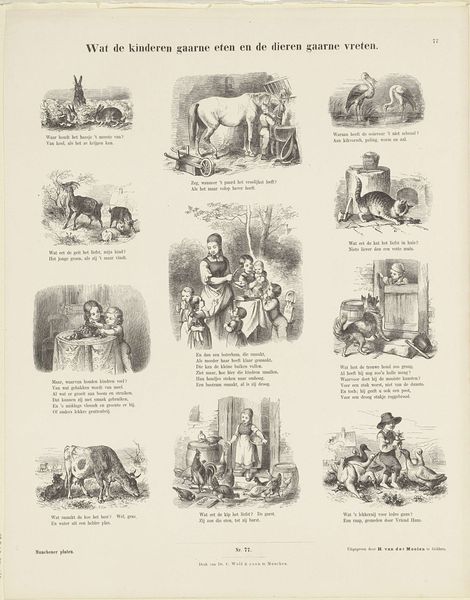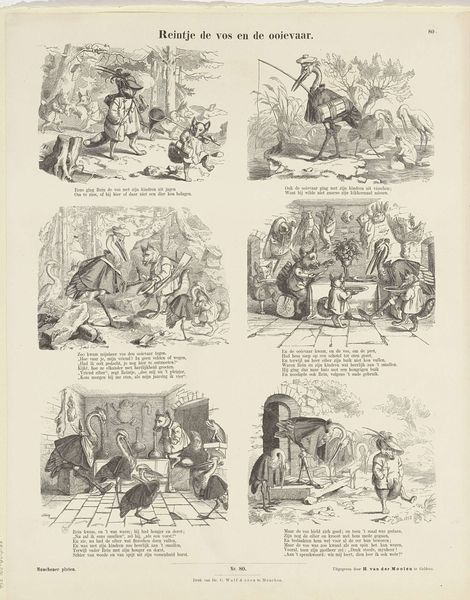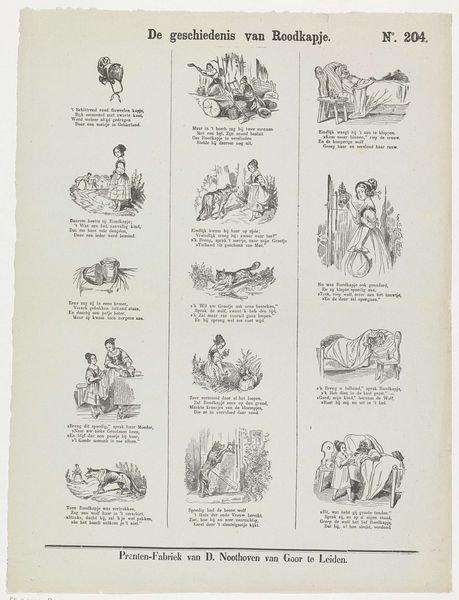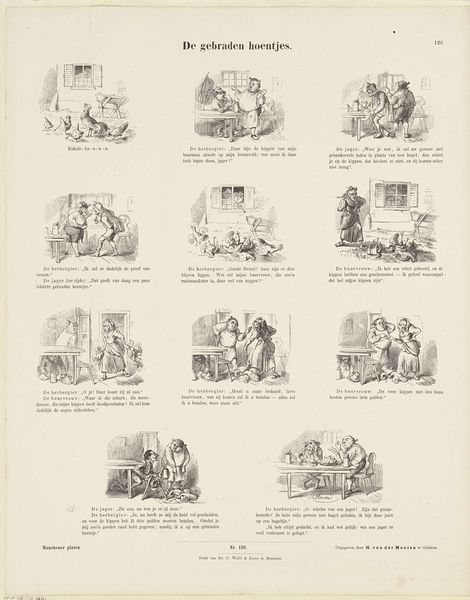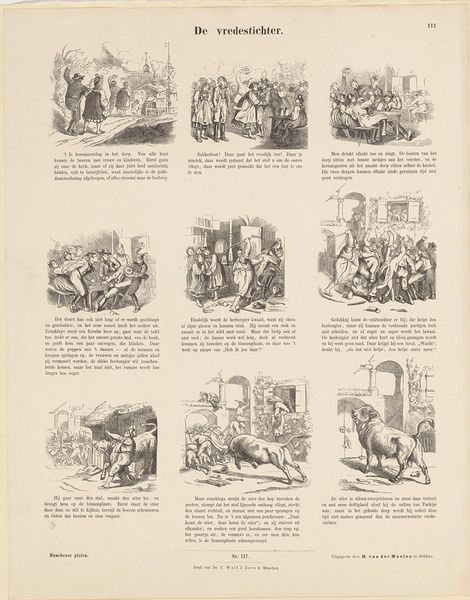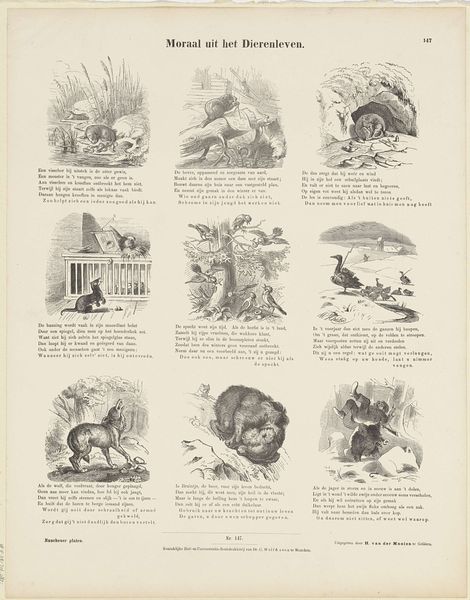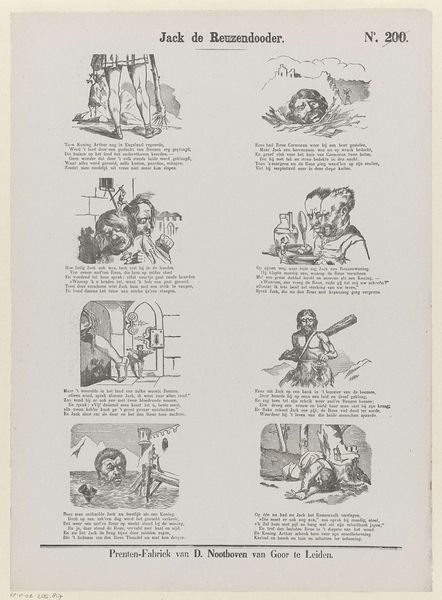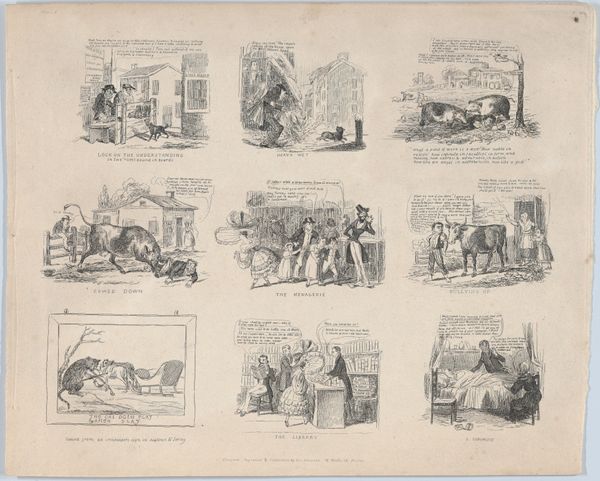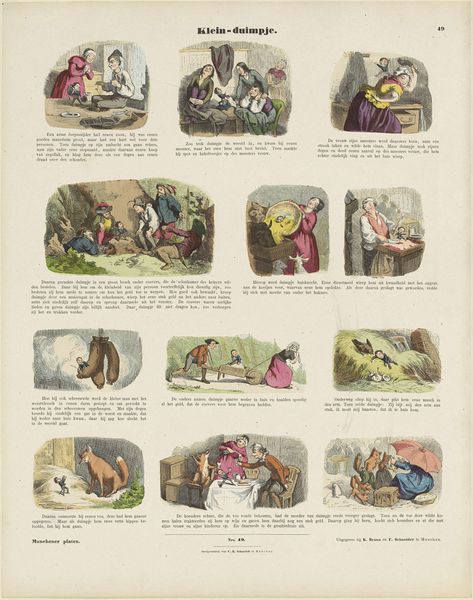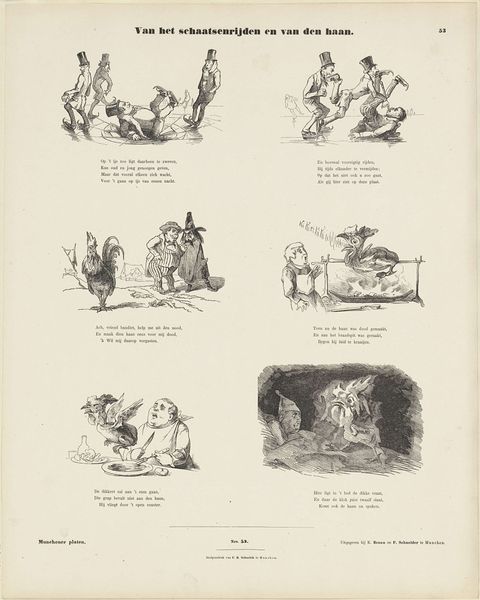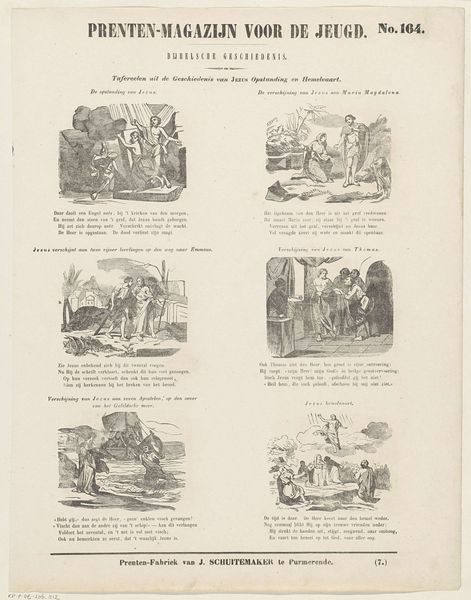
graphic-art, print, engraving
#
graphic-art
#
aged paper
#
narrative-art
# print
#
old engraving style
#
personal sketchbook
#
genre-painting
#
engraving
Dimensions: height 442 mm, width 355 mm
Copyright: Rijks Museum: Open Domain
Curator: Oh, this print has such a narrative pull! The humor winks from the aged paper, doesn’t it? I feel like I could write a collection of poems based on these scenes. Editor: I see a story alright, a series of them actually, presented as ‘Mijnheer Pieterman en zijn hond Tiras,’ dating roughly between 1843 and 1920. It’s a monochromatic engraving, with a decidedly antiquated feel. Curator: Right? It’s like a charming precursor to a comic strip, only with an air of…aristocratic bumbling, if that makes sense? The way the artist captures the dog, Tiras, always slightly exasperated by his owner's antics. I can almost feel it. Editor: I find myself focusing on what these vignettes say about class, leisure, and the roles assigned within that society. Consider the implied wealth allowing Pieterman these hunting excursions… the power dynamics at play. How is the dog situated? What position does he occupy in these small theaters of power? Curator: Power... or perhaps just partnership? I sense a genuine affection there, a co-dependent comedic duo blundering through the countryside. The drawing style is delightfully quaint – almost as if each frame is an ink-drawn memory from a shared personal sketchbook. I imagine the artist sketching rapidly, trying to capture a fleeting moment. Editor: The seemingly innocuous images subtly reinforce structures. Pieterman commands center stage, while Tiras's role is carefully circumscribed, relegated to the support act, mirroring the rigid social stratifications of that time. Are we complicit in simply enjoying the gentle humor, if we fail to scrutinize that wider context? Curator: Maybe. Or maybe art allows us a gentler doorway, a shared laugh before the tougher conversations begin. For me, that’s the value of the ‘personal sketchbook’ feel, as you noted before, that gives it authenticity, so that whatever power dynamic or structures you allude to is viewed with gentle humor as part of personal history. It disarms judgement. It speaks about that humanity you allude to, it brings that home, rather than seeing a remote picture. And dogs are always such honest critics, aren't they? Editor: Indeed. Looking closer now, I notice small gestures—the way Pieterman’s body leans towards Tiras, as he praises him when retrieving. Moments of genuine connection offer more nuanced dimensions than that simply rigid structure I focused on earlier. Perhaps in revisiting this, I reassess my quick take and let complexity broaden my interpretation.
Comments
No comments
Be the first to comment and join the conversation on the ultimate creative platform.
